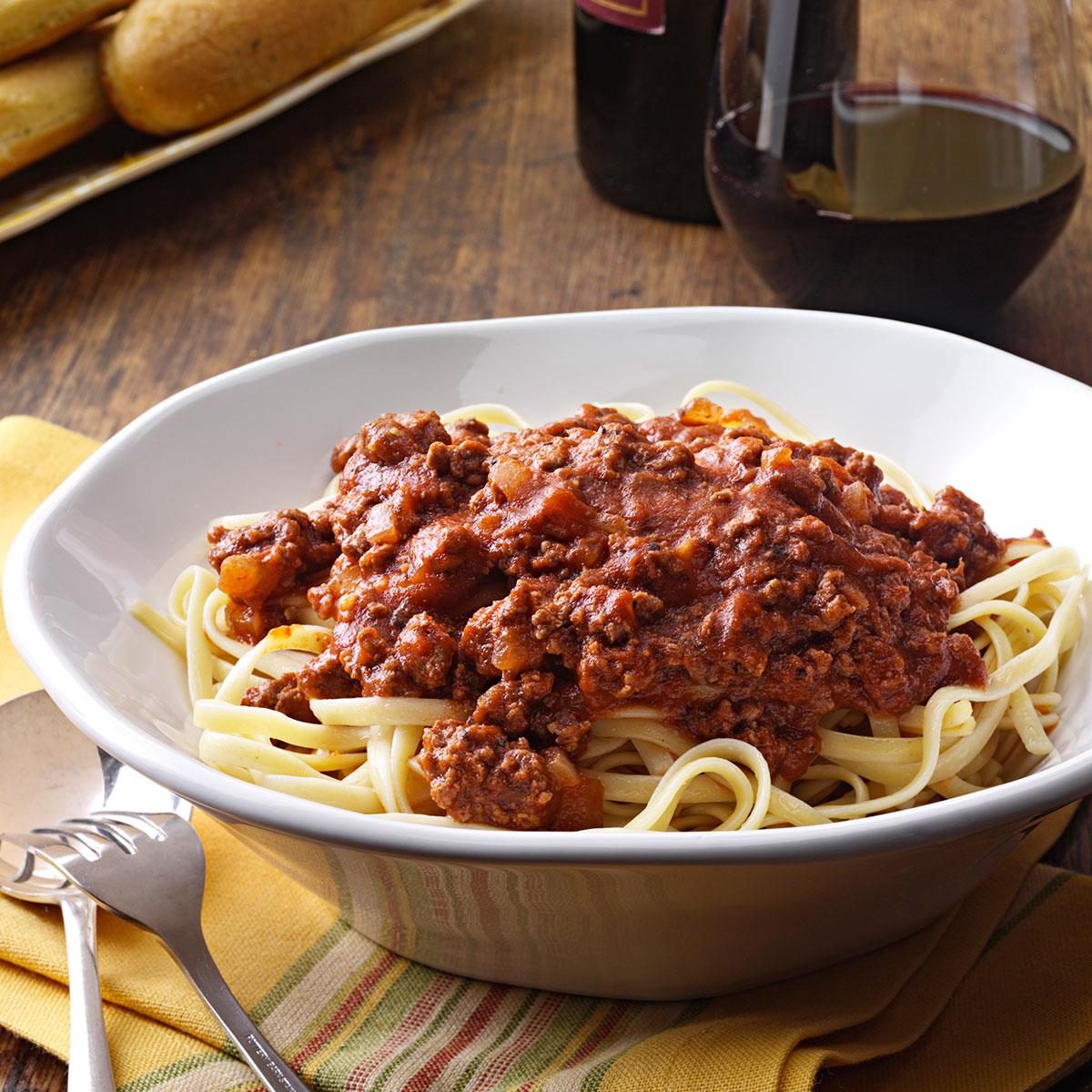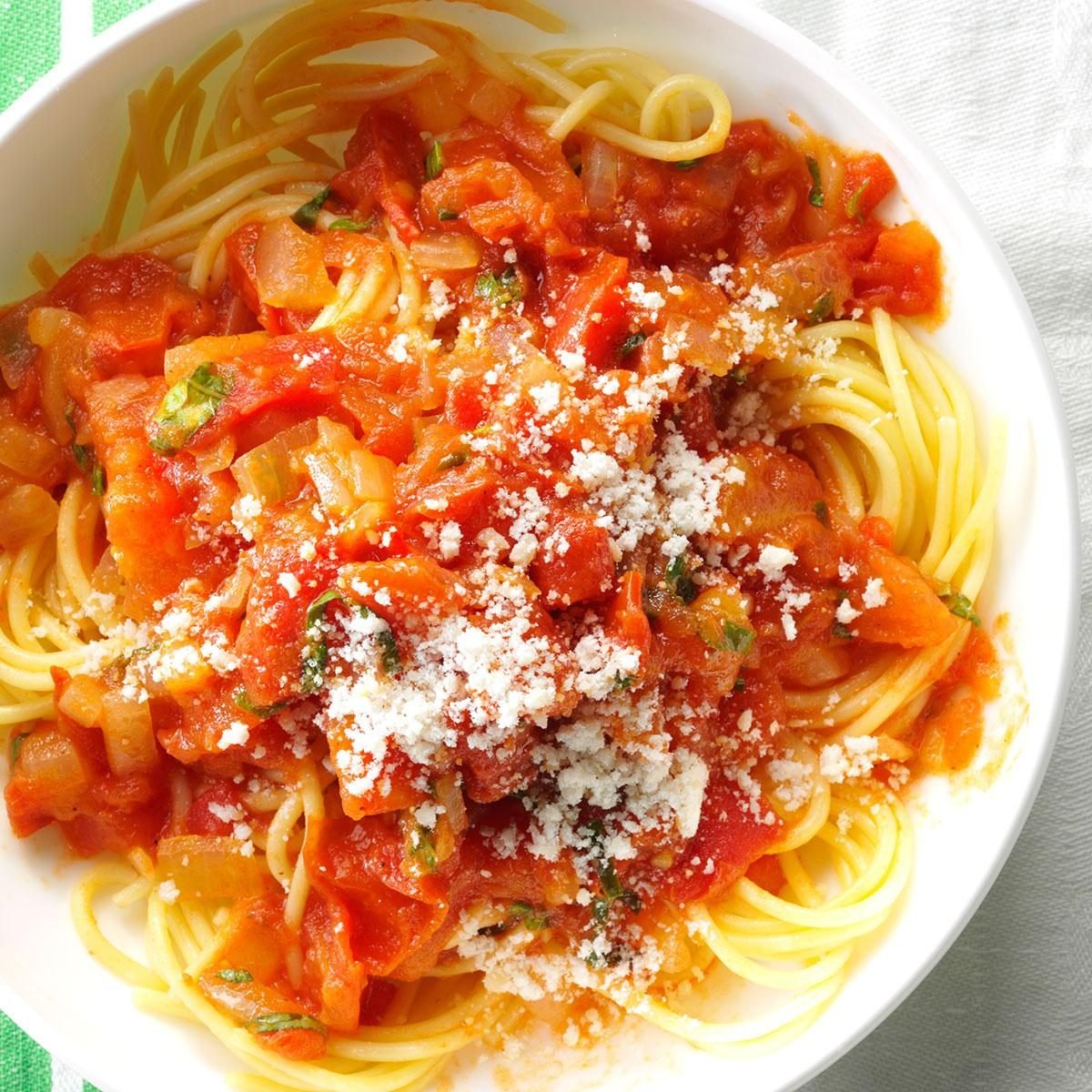Prepare to embark on a delectable culinary adventure with our comprehensive guide to crafting the perfect spaghetti pasta sauce. Whether you’re a seasoned chef or a home cook seeking inspiration, this recipe will unravel the secrets of creating a mouthwatering sauce that elevates your pasta dishes to new heights.
With its rich history and endless variations, spaghetti pasta sauce has become a beloved staple in kitchens worldwide. From classic tomato-based sauces to innovative creations bursting with unique flavors, the versatility of this culinary masterpiece knows no bounds. Join us as we explore the essential ingredients, cooking techniques, and creative enhancements that will transform your pasta nights into extraordinary dining experiences.
Introduction
Spaghetti pasta sauce is a culinary creation that transforms plain spaghetti into a delectable dish. It’s a versatile sauce that can be tailored to suit individual tastes and preferences, making it a popular choice among pasta enthusiasts.
The versatility of spaghetti pasta sauce stems from the wide range of ingredients that can be incorporated into its preparation. From classic tomato-based sauces to creamy Alfredo sauces and flavorful pesto sauces, the options are endless. This versatility allows for customization, ensuring that every palate can find a sauce that resonates with their taste buds.
Popularity
Spaghetti pasta sauce has gained widespread popularity due to its ability to elevate the dining experience. It adds flavor, richness, and texture to spaghetti, transforming it from a simple dish into a culinary delight. The popularity of spaghetti pasta sauce is also attributed to its convenience.
It can be easily prepared at home or purchased pre-made, making it a quick and effortless way to enhance a meal.
Ingredients
Crafting a delectable spaghetti pasta sauce demands a harmonious blend of essential ingredients. These elements work in unison to create a rich, flavorful, and satisfying sauce that elevates your pasta dish to culinary heights.
The core ingredients of a classic spaghetti pasta sauce include:
- Tomatoes: Ripe, juicy tomatoes form the heart of the sauce, providing a vibrant red hue and a sweet, tangy flavor. You can use fresh, canned whole tomatoes, or crushed tomatoes.
- Onion: A finely diced onion adds sweetness and depth of flavor to the sauce. Yellow or white onions are commonly used.
- Garlic: Minced garlic infuses the sauce with an aromatic and savory note. Fresh garlic is preferred for its intense flavor.
- Olive oil: Extra virgin olive oil provides a rich, fruity flavor and helps to sauté the vegetables.
- Herbs: Dried or fresh herbs such as basil, oregano, and thyme add a vibrant and aromatic touch to the sauce.
- Salt and pepper: Seasoning with salt and pepper enhances the flavors and balances the acidity of the tomatoes.
Variations and Substitutions
While the core ingredients remain constant, you can customize your spaghetti pasta sauce by experimenting with variations and substitutions:
- Tomatoes: For a sweeter sauce, use sun-dried tomatoes or cherry tomatoes. If fresh tomatoes are unavailable, you can use canned tomato puree or tomato paste.
- Onion: Substitute white onion with red onion for a slightly sharper flavor or shallots for a milder, sweeter taste.
- Garlic: If you don’t have fresh garlic, you can use garlic powder or garlic salt. However, fresh garlic is always the best option.
- Olive oil: You can use any type of vegetable oil, but olive oil is preferred for its flavor and health benefits.
- Herbs: Experiment with different combinations of herbs to create your own unique flavor profile. Rosemary, marjoram, and parsley are all good choices.
Ingredient Table
For your convenience, here is a table summarizing the ingredients, their quantities, and their functions:
| Ingredient | Quantity | Function |
|---|---|---|
| Tomatoes | 28 ounces (one can) | Provides flavor and color |
| Onion | 1 medium | Adds sweetness and depth of flavor |
| Garlic | 2 cloves | Infuses aromatic and savory notes |
| Olive oil | 2 tablespoons | Used for sautéing vegetables |
| Dried basil | 1 teaspoon | Adds vibrant and aromatic flavor |
| Dried oregano | 1/2 teaspoon | Enhances flavor and balances acidity |
| Salt and pepper | To taste | Enhances flavors and balances acidity |
Cooking Methods
Creating a delectable spaghetti pasta sauce requires careful attention to technique. Follow these steps for an exquisite culinary experience:
Begin by heating a generous amount of olive oil in a large saucepan or Dutch oven over medium heat. Add finely chopped onions and sauté until translucent. Stir in minced garlic and cook for another minute until fragrant. Pour in a cup of dry red wine and allow it to reduce by half.
Add Tomatoes
Next, add a can of crushed tomatoes, a can of diced tomatoes, and a tablespoon of tomato paste. Season with salt, black pepper, and dried oregano to taste. Bring the mixture to a simmer and cook for 30 minutes, or until the sauce has thickened.
Enrich the Flavor
To enhance the flavor, stir in a handful of chopped fresh basil and a pinch of sugar. If desired, add a teaspoon of honey or a splash of balsamic vinegar for a touch of sweetness and acidity.
Simmer and Serve
Continue simmering the sauce for another 15 minutes, or until it has reached your desired consistency. Serve the aromatic spaghetti pasta sauce over your favorite pasta, garnished with grated Parmesan cheese.
Variations and Enhancements
Customizing your spaghetti pasta sauce is a great way to add your own personal touch and create a unique flavor profile. Here are some ideas to get you started:
To adjust the consistency and thickness of the sauce, you can add more or less liquid, such as water, broth, or wine. You can also add cornstarch or flour to thicken the sauce, or blend it with a hand blender or food processor to make it smoother.
Herbs and Spices
- Add fresh or dried herbs such as basil, oregano, thyme, or rosemary for extra flavor.
- Experiment with different spices like garlic powder, onion powder, paprika, or red pepper flakes to enhance the taste.
Vegetables
- Add chopped vegetables like onions, peppers, mushrooms, or zucchini to the sauce for added texture and nutrition.
- Use roasted vegetables for a deeper, caramelized flavor.
Meat
- Cook ground beef, sausage, or chicken and add it to the sauce for a protein boost.
- Use leftover roasted meats for a flavorful addition.
Cheese
- Add grated Parmesan or Pecorino cheese to the sauce for a creamy and cheesy flavor.
- Stir in fresh mozzarella or ricotta cheese for a more decadent texture.
Pairing and Serving

The versatility of spaghetti pasta sauce allows for various pairings and serving options that enhance the dining experience.
When selecting the ideal pasta shape, consider the texture and thickness of the sauce. Spaghetti, with its long, thin strands, is a classic choice that allows the sauce to evenly coat each strand. Other suitable shapes include penne, rigatoni, or fettuccine, which provide a wider surface area for the sauce to adhere to.
Complementary Side Dishes
To complement the rich flavors of the spaghetti pasta sauce, consider serving it with a crisp green salad tossed in a light vinaigrette. This adds a refreshing contrast and helps balance the meal. Alternatively, a side of garlic bread or crusty bread provides a vessel to soak up the delicious sauce.
Plating Presentation
Plating the spaghetti pasta sauce in an appetizing manner elevates the dining experience. Begin by swirling a generous portion of sauce onto the center of a warm plate. Carefully nestle the cooked spaghetti on top, ensuring it is evenly distributed over the sauce.
Garnish with fresh herbs, such as basil or parsley, to add a vibrant touch and enhance the aroma.
Nutritional Value

Spaghetti pasta sauce is not only delicious but also packed with essential nutrients. By using fresh, healthy ingredients, you can create a flavorful sauce that provides your body with a range of benefits.
The table below provides a detailed analysis of the nutritional content per serving of a typical spaghetti pasta sauce:
| Nutrient | Amount |
|---|---|
| Calories | 150-200 |
| Fat | 5-10 grams |
| Saturated fat | 1-2 grams |
| Cholesterol | 0 milligrams |
| Sodium | 500-700 milligrams |
| Carbohydrates | 25-30 grams |
| Fiber | 2-3 grams |
| Protein | 5-10 grams |
| Vitamin C | 10-15 milligrams |
| Vitamin A | 5-10 milligrams |
| Calcium | 50-100 milligrams |
| Iron | 2-3 milligrams |
Last Recap
As you master the art of crafting the perfect spaghetti pasta sauce, you’ll discover a world of culinary possibilities. Experiment with different ingredients, herbs, and spices to create a sauce that reflects your personal taste and style. Remember, the joy of cooking lies in the exploration and experimentation that leads to delectable creations.
Embrace the versatility of this culinary canvas and let your creativity shine through in every spoonful of your homemade spaghetti pasta sauce.
Questions and Answers
Can I substitute canned tomatoes for fresh tomatoes in the sauce?
Yes, canned tomatoes are a convenient alternative to fresh tomatoes, especially when they are not in season. They provide a similar flavor and texture to the sauce, making them a suitable replacement.
How can I thicken the sauce if it’s too thin?
There are several ways to thicken the sauce. You can simmer it for a longer time to reduce the liquid content, add a cornstarch slurry (a mixture of cornstarch and water), or incorporate grated Parmesan cheese or breadcrumbs.
Can I freeze the spaghetti pasta sauce for later use?
Yes, you can freeze the sauce for up to 3 months. Allow it to cool completely before transferring it to an airtight container. When ready to use, thaw the sauce overnight in the refrigerator or reheat it gently in a saucepan.
